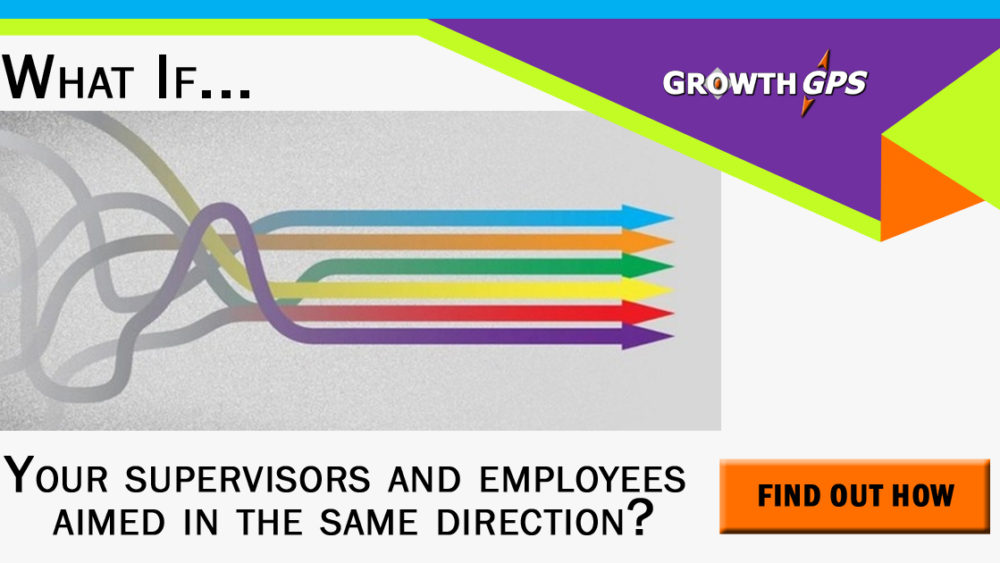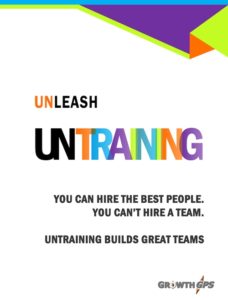What happens when your car is out of alignment? It pulls, right? You’re always fighting the steering wheel. You’re trying to go straight ahead, but your car wants to go right of left. Gas mileage goes down, tire wear goes up, and you’re more tired at the end of the trip from fighting the steering wheel.
Have you experienced that with an organization? Ideally, you want both vertical and horizontal alignment. Vertically, you want everyone from the executives to the janitor to understand and act on the mission of the organization. Horizontally, you want all the departments to be working towards the same goal. All employees, regardless of where they sit in the organization, should have a direct line of sight between what they do on a daily basis and how it affects the organization’s mission.
How’s your alignment? If 5 different staff members are asked, would they articulate a similar vision? Would they be able to say how they specifically contribute to achieving the mission?
WHAT DIRECTION ARE WE HEADED?
We each play out visions in our head about the organization’s direction. This creates our own implicit set of “rules of the road” that dictate how we and everyone else should act. However, when someone violates these rules, we get confused and angry.
If the President thinks we’re going to New York, the COO thinks it’s Detroit, and the CFO thinks it’s Atlanta, then when someone makes an unexpected turn, the other two say, “What going on? That’s not right.” And now, we have friction. That friction is what your employees feel all the time when the left hand doesn’t know what the right hand is doing, when one manager says one thing and another something else.
5 STEPS TO ALIGNMENT
Here are the alignment tools we use to get everyone on the same page:
- WHO – Decide who’s at the table to develop the mission and vision. Which stakeholders need to be included? Which ones could derail it later?
- WHY – Crystalize a clear mission, the difference your organization is here to make. It’s your organization’s reason for being. Try to keep it this simple — “We do (what) for (who) because of (why).”
- WHAT – Imagine a vivid 3-year vision. Not something vague and fuzzy, but specifics about what your company looks like 3 years out. A vision is a vivid picture. Clarify the picture in your head. What would I see, hear, and feel? Not 10 years from now, but in a manageable 3 years.
- HOW – VERTICAL. All your departments, programs, activities, investments, marketing, new technologies need to focus on the same few priorities that will achieve the majority of your vision.
- HOW – HORIZONTAL. Align internal processes, organizational systems and employee skills to support the vision. The organization structure, job descriptions, performance reviews, rewards, training should clearly link to your mission and vision.
- WHERE – Decide targets and metrics to track progress toward where you’re going. Your metric(s) should be easy to understand and track. Every employee should understand it. A good metric incentivizes positive behavior and be within your control. Think of metrics as your calibration tools.
Ok, that was 6 steps. That last one is often forgotten! We get everything else right – WHO, WHY, WHAT, HOW – but without tracking progress, we don’t know where we stand. We lose sight of the goal. We all know what happens next – someone comes up with a new goal – we get excited about it, and alignment goes out the window!
DON’T DELAY, ALIGN TODAY
Like most preventative maintenance, we are prone to put it off. If the car’s not shaking, then why bother to fix it? But as you know from your own experience, if you don’t deal with it proactively, you’ll eventually deal with it down the road at a much higher cost and inconvenience. Better to do a preventative tune-up than a costly emergency repair later.
Discover our Leadership Workshops – Vision, Culture and Alignment



